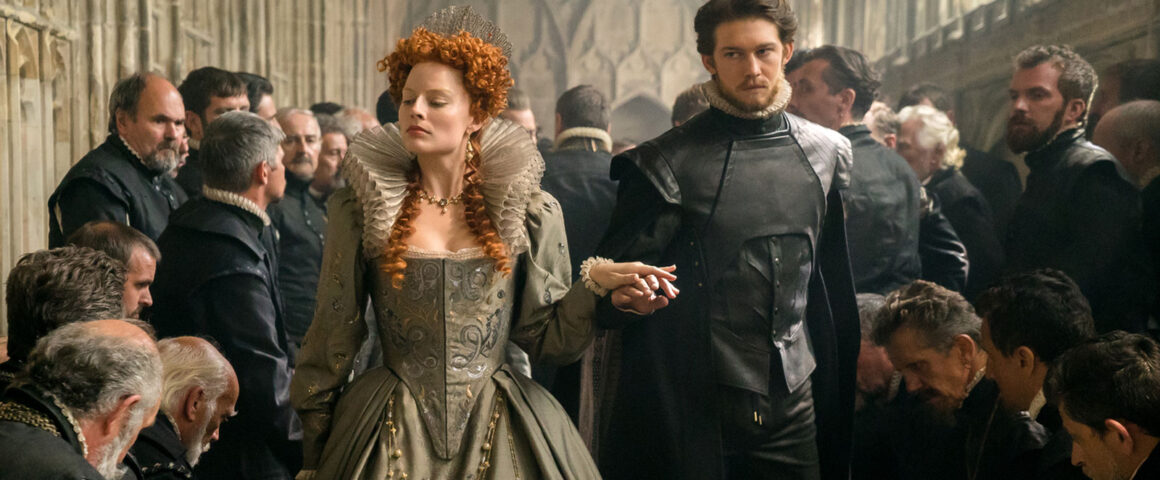Mary Queen of Scots, Josie Rourke’s interpretation of rival queens in the 16th century is stilted and anticlimactic, with poor pacing and a weak screenplay that casts a rather conspicuous shadow over its two prominent leads, Saoirse Ronan (“Lady Bird”) and Margot Robbie (“I, Tonya”).
Rourke, long affiliated with the London stage (she’s the artistic director of Donmar Warehouse), brings a certain vividness to the tale of Queen Elizabeth I of England (Robbie) and her upstart cousin, Mary, Queen of Scots (Ronan). Yet, while her frames burst with life — with tracking shots of the Scottish countryside and accurate Tudor-era clothing — her flare for theatrics seems to bring far too much melodrama and exposition to an otherwise gripping political tale.
The film chronicles the 1569 conflict between the English and Scottish crowns, whereby Catholic nobles from Northern England attempted to depose Elizabeth and place the Scottish Mary on the throne. Mary, who has returned to her homeland following the death of her French husband, acts on her strong claim to the English throne (compared to the thin lineage put forth by Elizabeth’s grandfather, Henry VII, who seized the throne in 1485). Mary builds her court and inner circle, and endeavors to challenge or succeed Elizabeth.
Although Mary is clever and clear-sighted, she’s embedded in a misogynistic society that isn’t quite ready for an authoritative female monarch (despite strides taken by the Tudor queens). She not only has to contend with international conflicts, but the thirst for power among her own nobles. First, her half-brother, the Earl of Moray (James McArdle, “Star Wars: The Force Awakens”), serves as her protector, but the pressures of producing an heir ultimately lands her in the care of the charming Lord Darnley (Jack Lowden, “Dunkirk”). Altogether, her path to the English throne is not an easy one.
Meanwhile, in England, Elizabeth fends off the male-centric advice of her privy council — and their wish for her to find a suitor. From each respective conflict, the two queens grow close, before civil war and political pressure drive them apart.
Ronan’s portrayal of Mary is both poignant and nuanced, with careful attention to detail and an apparent nod to the Scots’ longstanding power struggle with their southern neighbor. As Mary, Ronan is shrewd and calculating when she must be, and highly emotive and empathetic at other times — likely an accurate depiction of a young, ambitious Scottish “queen.”
Separately, Robbie is another standout, playing a guarded, fearful and seemingly outmatched Elizabeth. While costume designer Alexandra Byrne props Robbie into constricting period clothing, the actress works from a painfully scattered and soapy script, penned by “House of Cards” scribe Beau Willimon. Despite being burdened by the middling script, Robbie delivers a handful of true cinematic moments, as she grapples with men’s wishes and her difficult succession. (Elizabeth famously declined to name an heir, and upon her death the crown was passed to Mary’s son, James VI and I.)
Another issue with this version of Mary’s oft-dramatized struggle is the historical context. Willimon packs the narrative with detail, in hopes of highlighting emotional beats. However, the plot suffers as a result. The third act dispenses with characters, haphazardly ties up loose ends and leaps through time with little physical effect on many of the characters. Rourke’s theatrical eye unconsciously brings exposition (and monologue) to the forefront, suppressing John Mathieson’s exquisite cinematography and criminally under-using Robbie’s talents. Similarly, Elizabeth is reduced to a desperate, anguished ruler who is full of jealousy and despair. In reality, Elizabeth was an instrumental sovereign who guided her kingdom through a pivotal period that saw England defeat Spain’s armada in 1588 and spawned the dramatic works of William Shakespeare and Christopher Marlowe, among other feats. In Mary Queen of Scots, she is far too one-dimensional, seemingly operating by impulse instead of the intuition that kept her on the throne for close to 45 years.
To be clear, the film is accessible for a modern audience, and boasts some of the most remarkable visuals of the year, and for that may likely garner award buzz. Yet, on its own, Mary Queen of Scots fizzles out pretty quickly, devoid of the charm of Shekhar Kapur’s “Elizabeth” films with Cate Blanchett. It fails to truly transport viewers to the 1500s, instead offering thrills comparable to a one-off TV drama, with thematic threads that appear far too heavy-handed. Rourke aims to show how the Elizabethan era can speak to modern themes like feminism and equality; and while it certainly can, the subplots in Mary Queen of Scots equate to scenes that simply fall flat, like much of the film.



